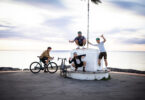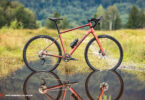It’s the 89th minute of a football match, the score nil-nil, the outcome–one team will be victorious, raising the end of season trophy, the other weeping into the turf. Post match, the winning team stand shoulder to shoulder, trophy being passed back and forth with smiles of the Cheshire Cat. This is how a team celebrates victory–together on a podium in front of a thousand camera flashes. That is, teams that aren’t road cyclists. Recently we sat down for a coffee with Juan Pablo Molinero, marketing director for WorldTour team–Movistar. We wanted to find out the key to marketing sports most complex team dynamic.
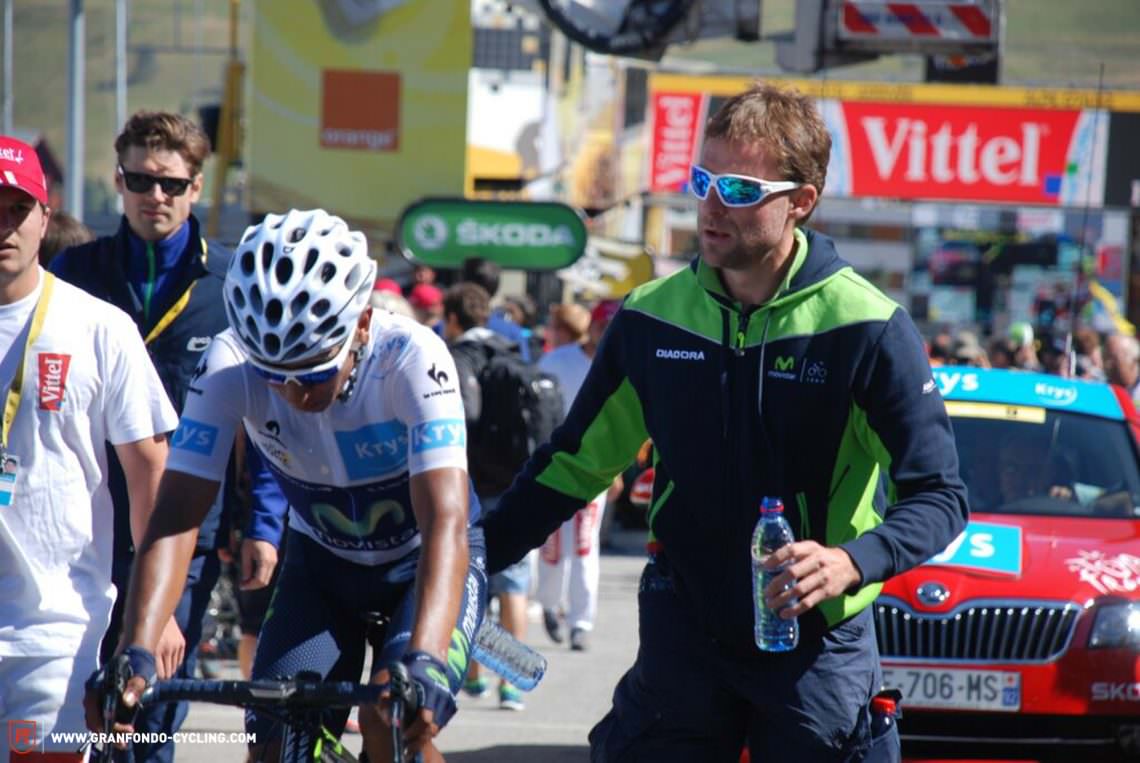
Why you don’t win with all the best
“If you take the best nine cyclists in the world and put them in the same team in the Tour de France you’re not going to win a thing. The particulars of cycling is that it’s a team sport but only one [person] wins. It’s something in between a team and individual sport.” Juan Pablo delineates. We all know that a yellow jersey is only stitched for one.
The constant tussle within a team takes management of a different kind, which is why so often you find that team managers are in fact ex-racers themselves, having experienced these previous conflicts. With such a balancing act it’s interesting to understand how marketing such a multi-faceted beast is possible. Especially how huge a part sponsors play in keeping teams afloat. Without the financial backing of the brand Movistar, unless they can attract another sponsor that’s willing to shell out a few million, the team will cease to exist. This is where the relationship between fan and team differs to other sports.


The Cycling Fan
Juan Pablo creates a comparison to Barcelona Football Club. The fans support the team, they wear a shirt with the club emblem, they might choose a shirt with their favourite players number and name on the back, but essentially they’re wearing the Barca strip. In cycling, when the team is the name of a brand, this disjoints the fan somewhat. Add to the equation the fact that many a cycling fan doesn’t want to be dressed head to toe in pro-kit for fear of the “Full Kit Wanker” tag. So if there is hardly any money through merchandising and ticketing how does someone like Juan Pablo market such a money pit of a sport?
“We have to think about how we want to differentiate ourselves from the other 18 WorldTour teams. Each one has different values, each one represents something different. Therefore we try to offer something unique, [we] give it value. When a brand of helmets or wheels enters the market and wants to sponsor a professional team they have 18 possibilities to go with.”
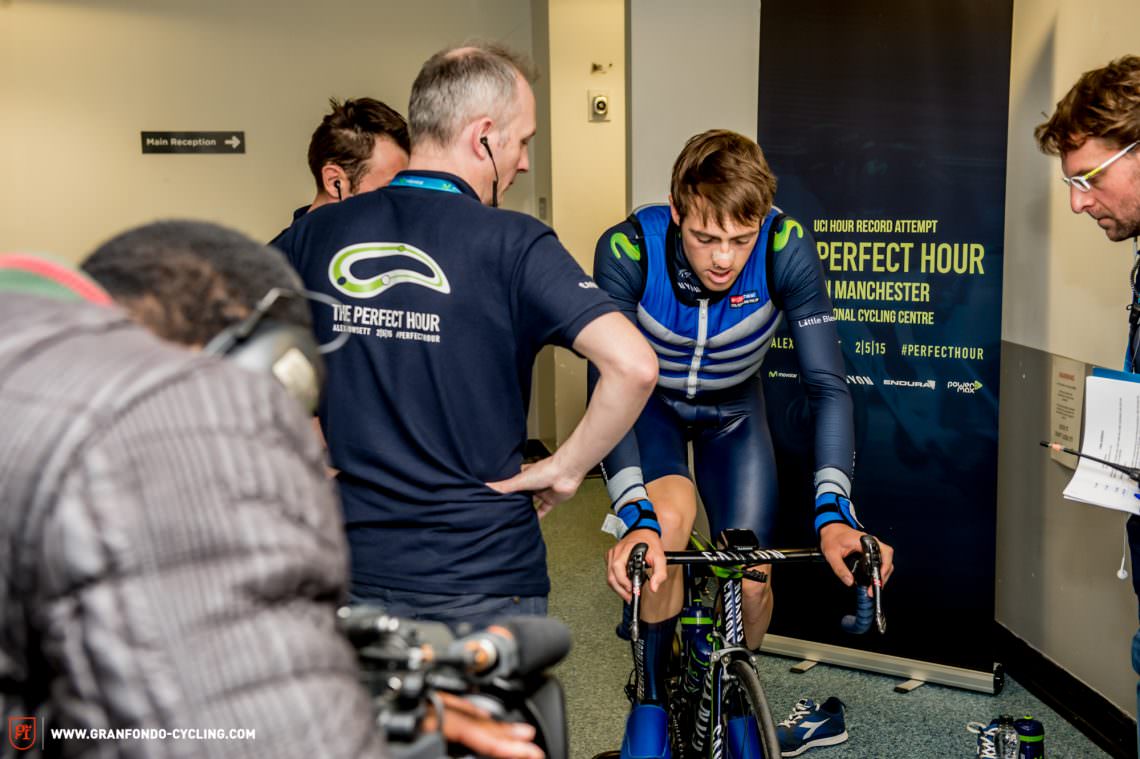
The Cost of Winning
If sponsors are only drawn to a team’s performance a darker complication is added into the melting pot. There is a fine line to be danced with the sports sworded history and even present day media ongoings. Stormy clouds seem to forever loom, people counting the seconds until the next lightning bolt strike: “This is where doping has affected it, if cycling hadn’t had to endure this then sponsorship prices would be a lot higher. It would be a lot more expensive to sponsor teams than what it currently is” Juan Pablo says without a sniff of hesitation.
But let’s not dwell on the negative, because as a sport, the values cycling has to offer very few other sports can match–the sacrifice, determination, blood, sweat and tears that unfold each year. It’s one of a kind. There’s also the ecological side too.With so many companies wanting to jump onto the “green” bandwagon an association with cycling is a winner. Many a CEO have donned lycra to outwardly project a company vision of clean living both environmentally and physically. After all this makes for great content, right? And there it is, the marketing ‘C’ bomb. On a daily basis thousands of hours are spent by brands to create content, if you’re not talking, you’re not being seen, but what happens when you’re not winning?
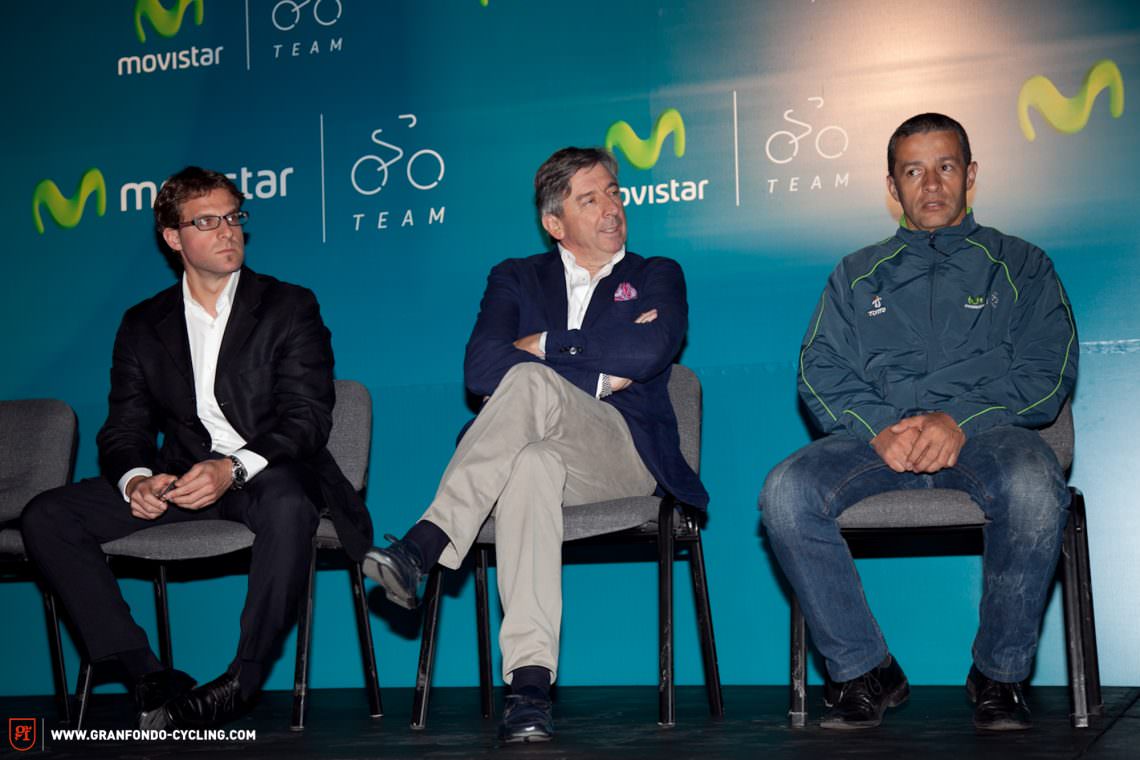
“It’s not all about winning but it’s what you talk about when you do win. We construct this each day together with our sponsors in things that are interesting. When another team wins we have to tell other stories, when we win, we talk about our values, our DNA of what makes us a team.” Juan Pablo explains.
In fact we know that constantly winning can generate negativity and that everybody loves a loser sometimes; we’ve seen what winning at all costs can create. But winning attracts media, and the more attention you attract helps keep the investors happy and increases spend. It’s that virtual circle: “If you win races the press talks about you, if the press talks about you, your value goes up. If your value goes up then more sponsors will be interested in you. If they pay you more money then you can create a bigger team” details Juan Pablo. Sounds so simple.
How much is it all worth?
Value of sponsorship is another avenue open to conjecture, although this is where brands should see great return on investment. Juan Pablo gives the example of brands who sponsor football matches: “A football game is 90 minutes, you have two teams and all the advertising around. They say that a brand will get 1 ½ minutes maximum airtime during a match. In cycling you have three or four hours if you get away in a break, or win solo. Multiply this by all the stages of something like the Tour de France, it’s a lot more profitable for your money”

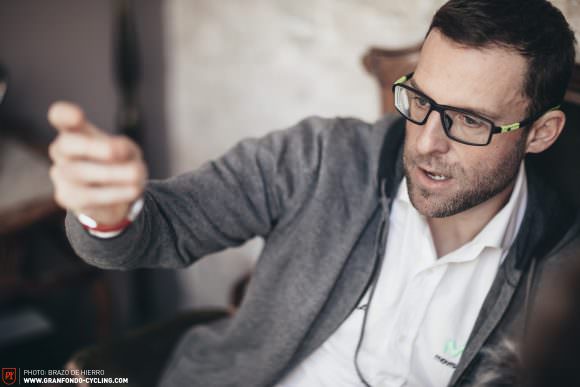
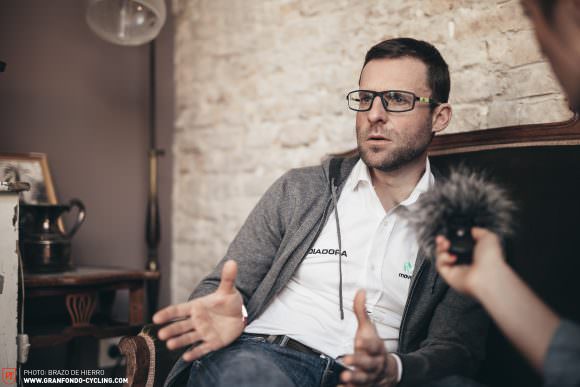
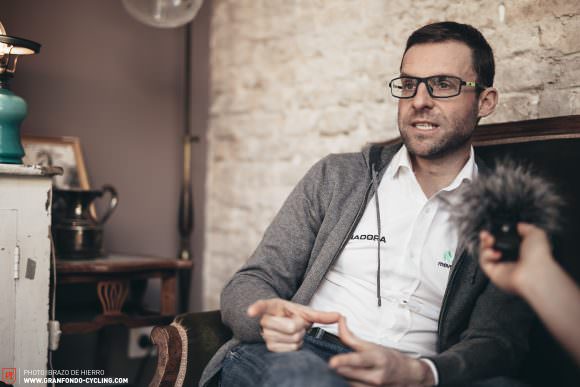
As cycling increasingly grows in popularity sponsors get increased benefits from the superstars of cycling. This is something that Juan Pablo also has to manage. He gives the example of Warner Bros contracting Tom Cruise to star in a film. They pay him a lot of money so he is contractually obliged to not go awol and say whatever he wants. It’s his job to try and control how the team projects itself in the industry, not an easy task sometimes when the “employees” are risking life and limb to provide entertainment to the masses. It’s understandable that there can potentially be the odd slip up.
These media slip-ups can have a higher tendency to happen when that precarious team equilibrium tilts in the wrong direction. So how do you walk that fine line? How do you get eight to work for one?

“It’s this that makes cycling so different. There’s a level of psychology behind bringing a team together. You have to have an intelligent system that functions to make the other eight riders feel that they are winners as well. They won’t go up on the podium but they still feel like winners.”
How to reward a team
These systems involve a myriad of rewards, from watches, to laptops, to holidays. For some it’s the emotional gesture of a public mention of thanks, or an elegant yet simple appreciative hand on the shoulder. Every rider is motivated differently, even more so when there is a mix of cultures. Juan Pablo identifies that his fellow latinos express emotions differently to that of, say the anglo-saxons–another path to navigate.

Each member of the team has to be considered for how they fit into this tightly intricate web, where weaknesses are matched by strengths; prowess matched with sacrifice. This is then woven together with the team values that Movistar set out, its DNA that Juan Pablo tells us about. One of the successes that Movistar has achieved consistently over the last four years is being the number one team in the world. This is one accolade that a whole team can truly feel like it’s their own and one that Movistar will continue to chase.
Winning DNA and values
Constructing a winning formula involves mapping out a race calendar with leaders who should excel over different terrains, which then needs to be matched with eight riders who will give unconditional support so as the formula has a chance of success. Along with a bit of luck, no actually a lot of luck. To achieve this, that bonding helix of DNA needs to be clear to all. But what happens if the principal sponsor withdraws, as we see so often in cycling? Does that fragile DNA have to be reconstructed?
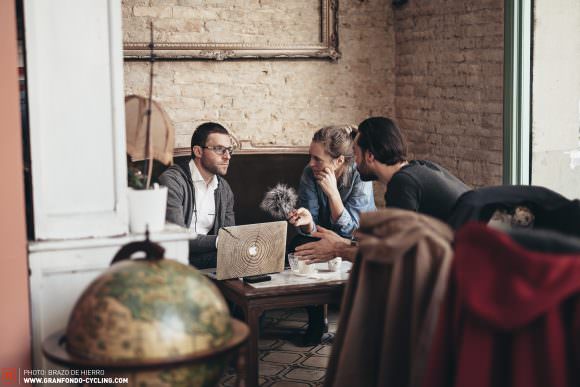

“Not really, because a team has it’s DNA, and it’s own way of doing things, independent of the sponsor. The only way things may change is for example if your sponsor is Chinese and they want you to have a Chinese rider, then this might change the team because you have different cultures. But it’s really difficult for a team to change its DNA. If you lose this, then you start to lose your identity. It’s like if Tom Cruise always does action films then changes to drama, it’s not that believable.” Momentarily I think of Tom Cruise playing a rural policeman, investigating sleepy village murders–he’s right it wouldn’t be believable.
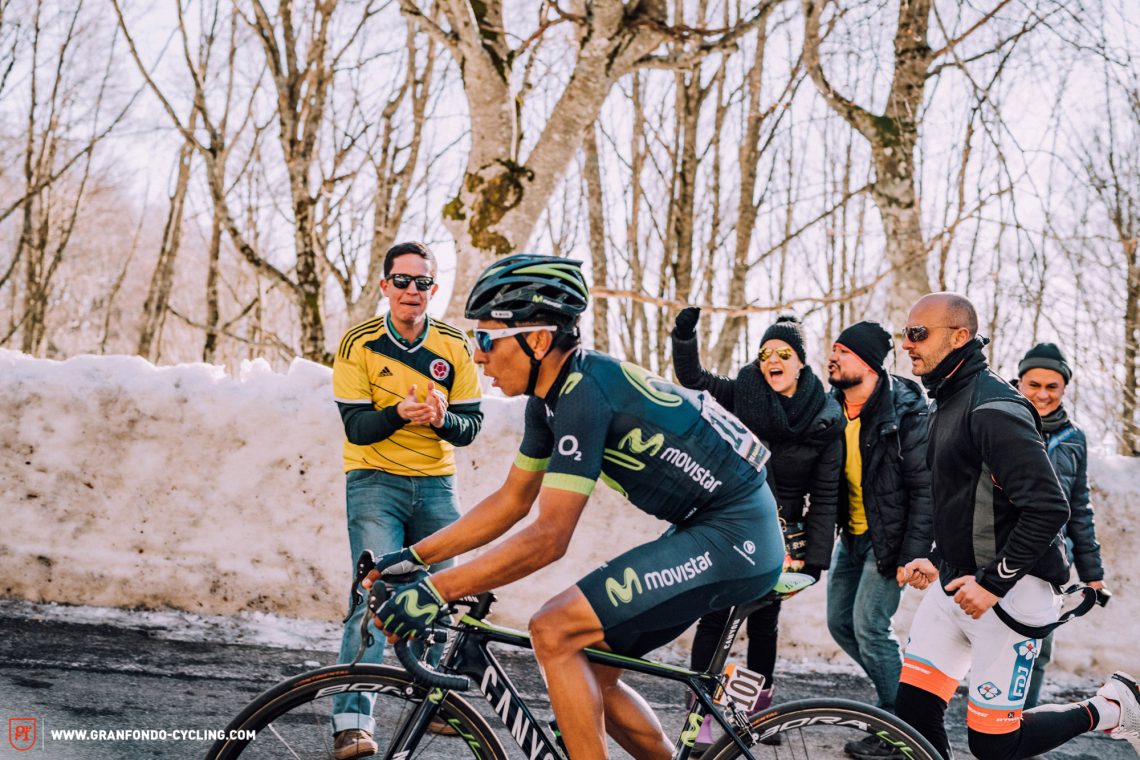
Creating those winning values takes time, and with 30 years in the making Movistar has that time under its belt, albeit in different guises. They don’t have the biggest budget, which Juan Pablo mainly attributes to the markets their sponsorship works in. It’s known that if you are a team communicating with fans in English then this instantly increases your reach. But money isn’t the only place where success comes from, although it obviously helps. Knowing where up and coming talent is emerging is paramount; take Marc Soler, their neo-pro who was formerly raised through Paco Glavez’s development team–U.C. Vilanova. This is where eyes and ears on the ground searching for the next big name is just as important as pacifying the ones you already have.
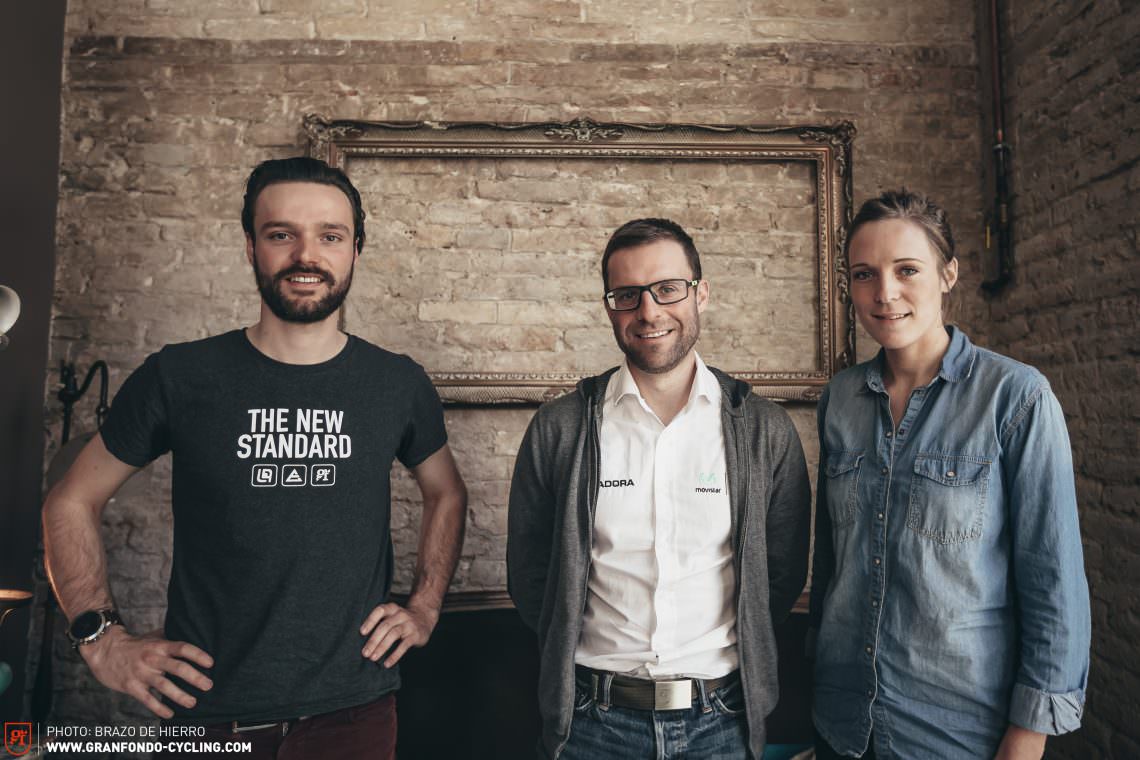
For a world class team to operate it’s a constant churn of information, results and emotions, spread across the globe. It’s easy to see this hive of activity in Juan Pablo, there’s a level of mental processing going on inside that results in moments of distance from the conversation, before coming back to us. It takes a huge amount of brainpower to ensure that 28 riders all feel valued and like they’re winning. It’s all about creating that metaphorical podium on which every member of the team can stand upon at the end of the season, and feel proud of their sacrifice.
Did you enjoy this article? If so, we would be stoked if you decide to support us with a monthly contribution. By becoming a supporter of GRAN FONDO, you will help secure a sustainable future for high-quality cycling journalism. Click here to learn more.
Words: Photos: Brazo de Hierro, Various


